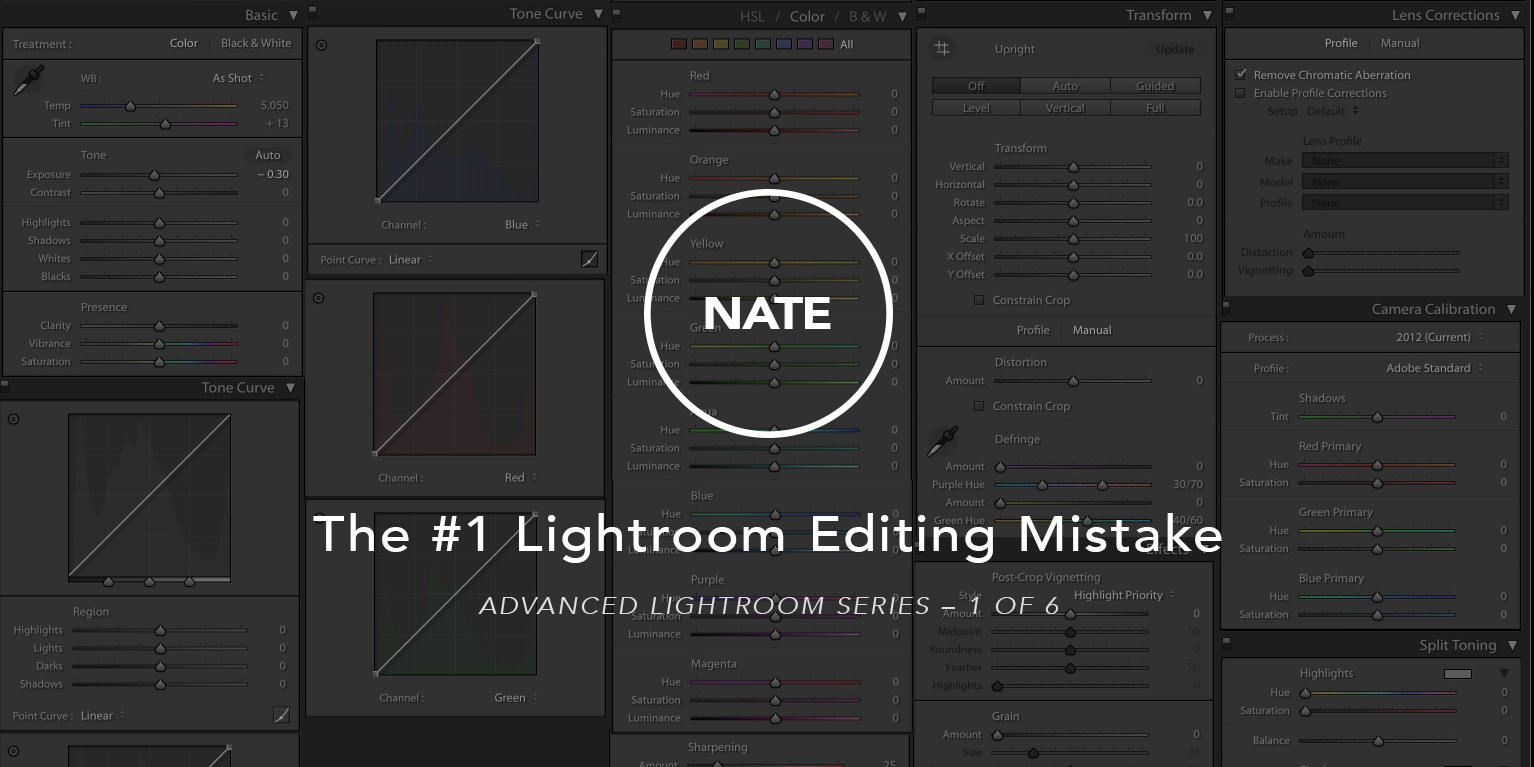Ever since I started developing presets for Lightroom, photographers have been asking me how they can get better results out of Lightroom, or even how they can start designing their own styles & presets. So I'm going to be sharing a series of 6 posts on the topic, which I'm calling the "Advanced Lightroom Series."
In this series, I'll give you more insight into my process and help you overcome some of the most common hurdles I've seen photographers face when trying to get to the next level in their Lightroom development.
So let's begin, shall we?
. . .
The biggest mistake in Lightroom isn't about any single setting – it's about a habit...
I get emails all the time from Photographers who are struggling to get the editing results they want in Lightroom. It's taking too much time, and they aren't happy with the final images their producing.
9 times out of 10, I can trace the problem back to the same mistake – the same "mortal sin" of Lightroom editing. You may be imagining that the #1 mistake is about a setting that photographers get wrong. Like, “oh, your contrast setting is at +10 but it should be at +15.”
But that’s NOT what this is about at all. This is about something WAY more fundamental to how we as photographers are processing images. It has to do with your process.
Does this sound familiar?
- You import your photos into Lightroom
- You're not thrilled with how they look initially
- Maybe you try a few presets until one of them looks closer (but still not perfect)
- And then... you start "fiddling around" with the settings
- "Hmm, let me try moving this slider to the left... nope... let's try the right."
Pretty soon, you've fallen into the trap of "fiddling around" with settings.

Ugh!!
I mean, just look at all these potential settings to adjust! There are over 97 settings you can adjust inside Lightroom (not to mention infinite combinations of tone curves).
If you're hoping that you'll eventually get just the right combination of these settings by fiddling with each of them individually – well, you're going to have a bad time.
So here's the mistake:
The #1 mistake is trying to edit your photos through trial and error – fiddling around with each setting.
Almost all of us, at some time or another, fall into this trap. In fact, this bad habit is actually reinforced by a lot of YouTube training videos and online courses, that just teach you how to use the settings, one by one, but never show you how everything fits together.
And it's a recipe for disappointing results:
- You’ll never be 100% happy with your photo edits. Maybe with enough fiddling, you’ll get one or two photo results you like, but you won’t be able to consistently achieve the editing results you want.
- You’ll miss out on Lightroom’s most powerful tools. The real power of Lightroom is in three tools: Tone Curves, the Color Curves and HSL panel. These are tools that require skill and understanding. Trying to fiddle around with these tools simply won't work. You have to know what you're doing and have a strategy.
- You'll waste time and energy. Can you imagine how much time you’d save if you knew exactly what tools to use and how to use them effectively to get the exact look you want?
So, how do you get past "trial and error" editing in Lightroom?
It all begins with something I call the "4 Building Blocks of Style", which we'll help you break down the components of photo editing into manageable chunks. Rather than focusing on the tools of Lightroom, you'll start by learning to observe and understand the specific results you want.
And that's exactly what the next post in this series will be about. So I hope you'll stick around for that!
UPDATE: You can now access the next post in the series here: The 4 Building Blocks of Style →
Continue in Advanced Lightroom Training
The #1 Lightroom Editing Mistake- The 4 Building Blocks of Style →
- Intro to Tone Manipulation in Lightroom - coming soon
- The 3 Rules of Tone Curves - coming soon
- Understanding Color Casting (And The Individual R/G/B Curves - coming soon
- Designing Color Palettes Around These 3 Crucial Color Hues - coming soon

Hey Nate,
I was wondering what happened to this guide. I read it diagonally a while ago and was looking to read it back again.
Cheers!